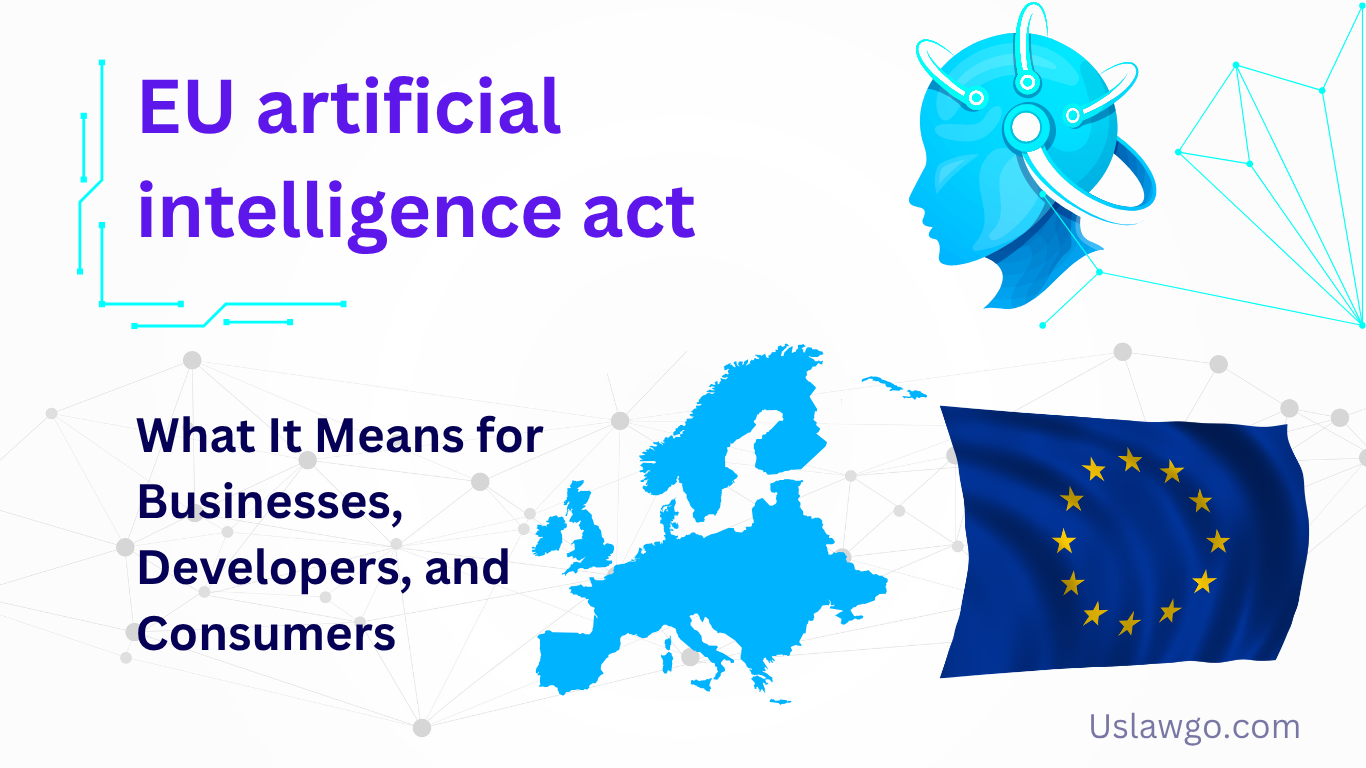eu artificial intelligence act
Being the world’s first comprehensive legislation of its kind, the EU Artificial Intelligence Act seeks to govern Artificial Intelligence (AI). Adopted officially by the European Parliament in March 2024, this very novel regulatory framework seeks to ensure that AI systems used in the EU are safe and transparent and respect fundamental rights.
Having far-reaching global implications, the Act is poised to effect changes in the functioning of AI in development and deployment, not only within Europe but across the globe.
Why Did the EU Create This AI Law?
Artificial Intelligence is rapidly evolving. It is being used to pass judgments on matters of employment, medical diagnosis, credit scoring, and even public surveillance. While the use of AI might be helpful, does not mean it could go wrong-and that might lead to a biased decision or privacy violations.
For this reason, the EU Artificial Intelligence Act was created to:
- Set clear rules for AI development and use
- Protect people from harmful or unfair AI systems
- Encourage safe innovation and build trust in AI
- Establish a global standard for responsible AI
How the EU AI Act Differs from GDPR
| Aspect | GDPR | EU AI Act |
|---|---|---|
| Focus | Personal data protection | AI system regulation |
| Scope | Data controllers/processors | AI providers, users, importers |
| Approach | Risk to data privacy | Risk to health, safety, rights |
| Penalties | Up to €20M or 4% turnover | Up to €35M or 7% turnover |
Timeline of the EU Artificial Intelligence Act
- April 2021: Proposal by the European Commission
- December 2023: Final text agreed upon
- March 2024: Formal adoption by European Parliament
- 2025-2026: Gradual implementation and enforcement phases begin
How the EU AI Act Works
European Union (EU) does not apply one size fits all when it comes to the treatment of AI systems but does so depending on the potential risks they pose and has thus kept them under four different categories:
1. Unacceptable Risk (Banned)
These are AI systems that pose a clear threat to people’s safety or rights. Examples include:
- Social credit scoring
- Real-time facial recognition in public (with few exceptions)
- Predictive policing tools based only on personal data
2. High-Risk AI
These systems are legal, but face heavy regulation. They include AI used in:
- Healthcare (e.g., diagnostic tools)
- Recruitment (e.g., resume screening)
- Education (e.g., grading systems)
- Finance (e.g., credit risk analysis)
Developers must follow strict rules like documentation, transparency, human oversight, and risk assessment.
3. Limited Risk
These systems need to be transparent, but they’re not tightly regulated. For example:
- Chatbots that must tell you they’re not a human
- AI-generated content that should be labeled as such
4. Minimal Risk
These are common, low-risk uses of AI like:
- Spam filters
- AI in video games
- Smart assistants used for daily tasks
What Does the EU AI Act Mean for You?
For Businesses and Developers
If you’re building or using AI systems in the EU, you’ll need to:
- Know how your AI tool is classified
- Keep clear records of how it works
- Ensure safety, accuracy, and human involvement in decision-making
For Startups and Tech Companies
Even small businesses will need to comply. The EU is also creating regulatory sandboxes to help smaller teams test and improve AI systems safely.
For Consumers
People in the EU will benefit from stronger rights and greater transparency. You’ll be informed when you’re dealing with AI — and protected from its harmful use.
What Happens If You Don’t Follow the Rules?
The fines are serious:
- Up to €35 million or 7% of global turnover for the most serious breaches (like using banned AI)
- Smaller violations can still cost millions
This law isn’t just a suggestion. It has real consequences for businesses that don’t comply.
What’s the Global Impact?
Just as GDPR shifted the world’s perspective on data privacy, the EU AI Act is setting the tone for global AI regulation. Japan, Canada, and Brazil are all paying close attention. Even American tech giants alter their AI applications for the sake of EU compliance.
This law could be the one influencing the manner in which AI is governed across the world.
Frequently Asked Questions
Does the EU AI Act apply to companies outside Europe?
Yes, if you’re offering AI systems in the EU market, you must follow the rules.
Is machine learning covered under this law?
Absolutely. Any algorithm that processes data and makes decisions or predictions falls under the Act.
Will this impact generative AI tools like ChatGPT or DALL·E?
Yes. Generative AI must clearly inform users when content is AI-generated, and meet transparency standards.
Conclusion
The EU Artificial Intelligence Act is not just about restrictions — it’s about building trust in this powerful technology. By laying out clear and fair rules, the EU has made an important step in instilling confidence in the operational world of AI amongst both innovators and users.
If you are in the tech field, now is the time to prepare yourself. If you are a consumer, safer and more transparent AI will be yours in the years to come.
